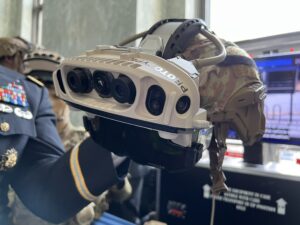
After receiving the first 20 prototypes of the new “1.2” upgraded version of the Integrated Visual Augmentation System (IVAS) headset from Microsoft [MSFT] this week, the Army’s top acquisition official said Wednesday he’s “cautiously optimistic” the program is “trending in the right direction.” Doug Bush, assistant secretary of the Army for acquisition, logistics and technology said the redesigned IVAS 1.2 will go through operational testing this fall, where critical feedback from soldiers on the form factor and adjustments to the…

 By
By 











